Old Southern Apple Descriptions
(Page 3 of 3 - scroll the page to see apples)
Roxbury Russet
Roxbury Russet: This apple is the oldest American apple, originating early in the 1600’s in Massachusetts. It was one of the most widely grown russets in the South. It makes truly exceptional cider and cooks well. The tree is a healthy grower, usually bearing large crops most years, and exhibiting resistance to many apple diseases. Fruit is medium or larger and green to yellow in color with a brown russet. Flesh is yellow, coarse, and firm with a subacid flavor. Ripens in September and October and a good keeper.

Roxbury Russet
Smokehouse
Smokehouse: This Pennsylvania apple was brought to public attention in 1837. Its name came from William Gibbons, who noticed the original tree growing beside his smokehouse. The tree is a vigorous grower that fruits well in most of the South. The apples are good for eating fresh from the tree, but I recommend saving them for cooking. The fruit is medium in size, green to red in color, and has a firm flesh. The fruit begins falling in July but is not fully ripe until September.
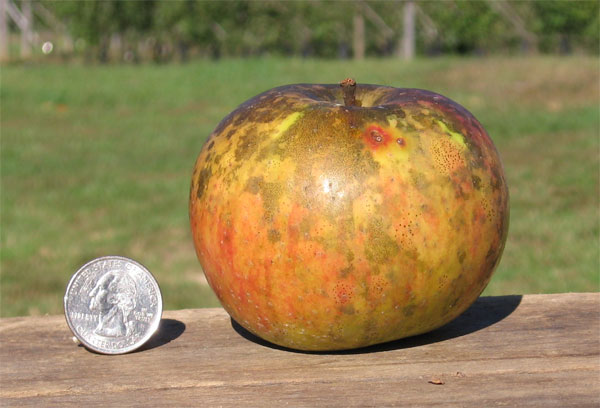
Smokehouse
Sops of Wine
Sops of Wine: Originating around 1832, this apple tastes similar to the outstanding E. Spitzenberg, but is far more disease resistant. The apple is round with a dull yellow and red color. It is firm, has an acidic-sweet flavor, and ripens in September.
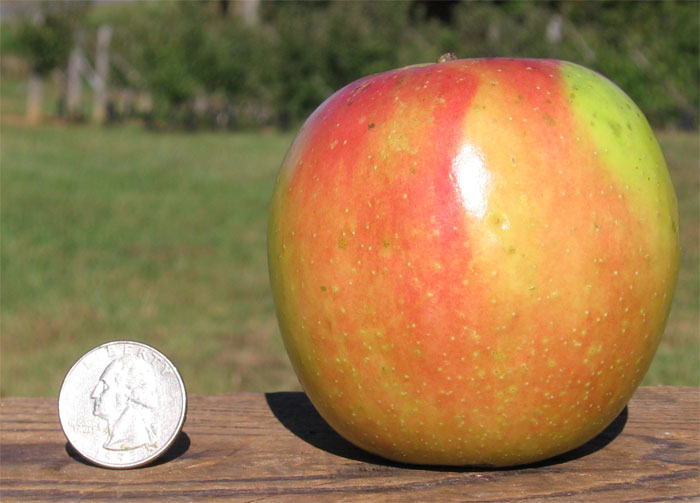

Sops of Wine
Summer Banana
Summer Banana: This apple is from Marion County, South Carolina and was first grown in the late 1800’s. It is so named because it can have a slight banana aroma when fully ripe. This apple was my grandmother’s favorite. No other apple fries as well, and my grandmother loved fried apples. Its fresh taste is also quite exceptional for an apple ripening during the heat of the summer. Many tales are told of this apple being the choice of tobacco laborers during their brief breaks from the fields. There is also a Winter Banana that is said to have some of the same characteristics, but it ripens in October and is not preferred as a cooking apple. The Summer Banana’s fruit is usually medium in size, a deep yellow with small light green splotches and perhaps a few red dots at its peak of ripeness. The flesh is fine grained and can have a faint smell of banana if fully ripe. Fruit ripens in August into September. (One of my favorites)
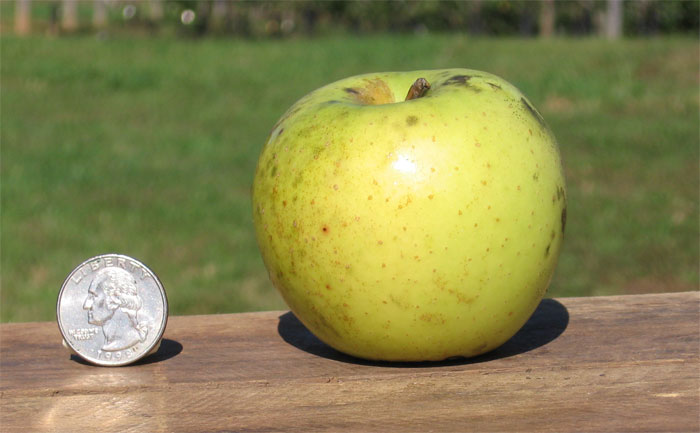
Summer Banana
Terry Winter
Terry Winter: This apple originated in Fulton County, GA before 1860. It is adapted to many southern climates and will grow and fruit well in both warmer climates and mountain areas. It blooms very late, escaping most frosts. The apples are red, sweet, juicy, firm, and store well. The flavor is quite unique. Ripens in mid-November.
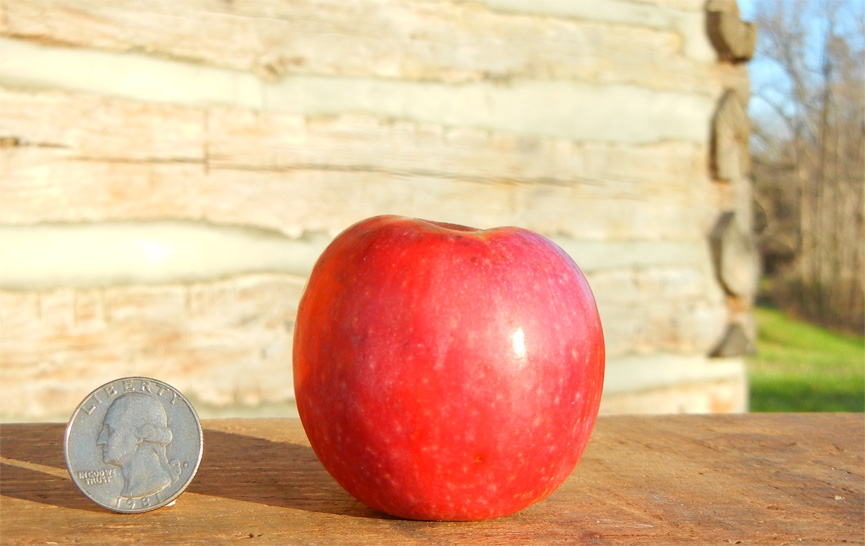
Terry Winter
Virginia Beauty
Virginia Beauty: The original tree grew before 1820 in what is today Carroll County in southwestern Virginia. The name implies an attractive apple, but it is also an excellent eating and dessert apple. In 1914, F. H. LaBaume, a Virginia farmer and fruit grower, wrote to the United States Department of Agriculture saying of the Va. Beauty; “ It has a distinctive flavor all of its own that clings to the palate and lingers in the memory for a lifetime.” The tree is known for producing wide branching angles, a trait that aids in producing proper tree structure. Fruit is medium to large with a glossy red or purplish color. Its flesh is greenish-yellow, fine grained, tender, juicy, sweet, and mildly subacid. Ripens in October.
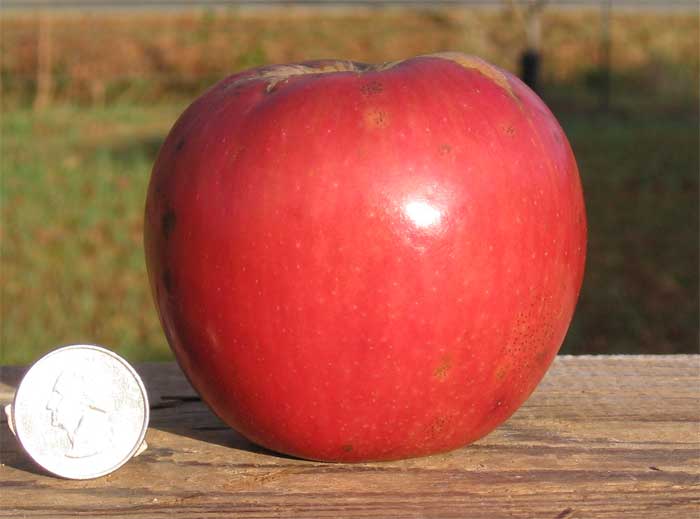

Virginia Beauty..............Va. Beauty apples are notable for their russetted "bonnet" on top (see right image.)
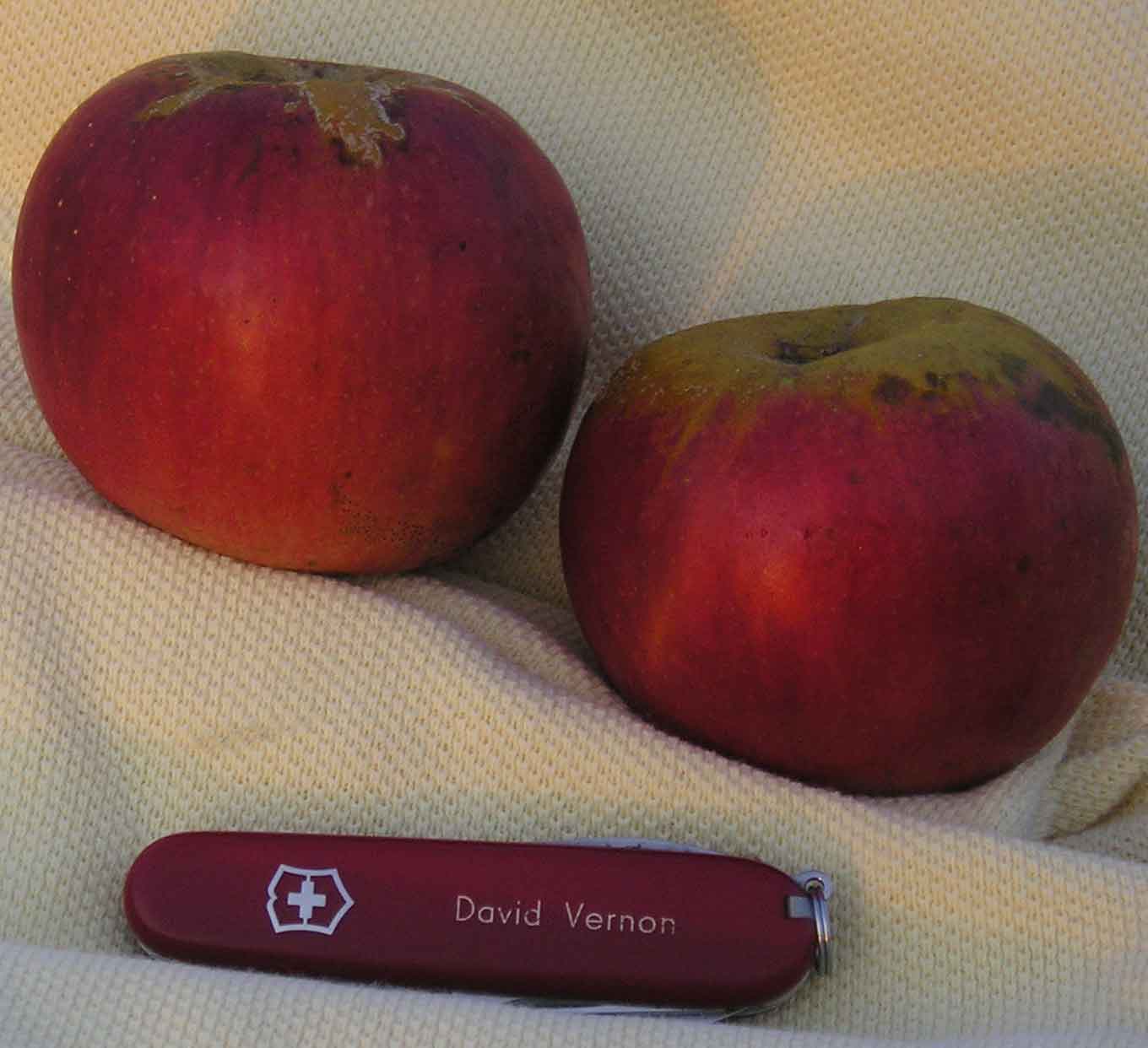

Virginia Beauty..................................................... Va. Beauty apples in the orchard
William’s Favorite
William’s Favorite: The variety originated in Massachusetts in about 1750, but became known as an excellent apple when grown in the South. This prized, early season apple is absolutely beautiful. Conical in shape and medium to large in size, its bright red apples catch the eye of friends and neighbors each July. The tree is disease resistant and the apples are of outstanding quality. The apples are excellent for cooking and eating. The flesh is moderately firm, mostly white, juicy, and mildly subacid. Ripens in early to middle July.
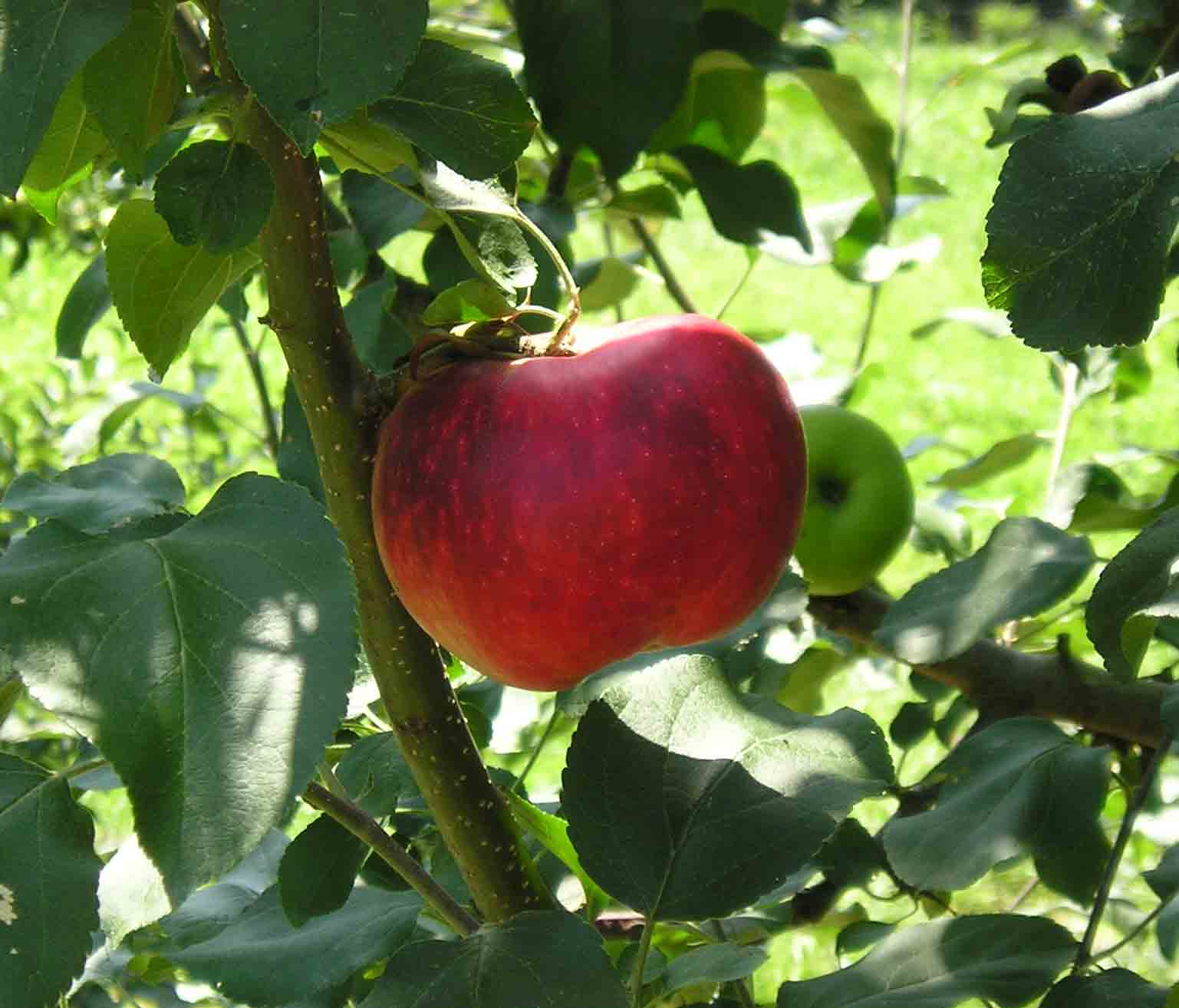
William’s Favorite
Winesap
Winesap: Originating in New Jersey before 1800, this apple has become well loved throughout the South. The reasons for this affection are many. It has the ability to grow on most southern soil types, most notably clays. The tree is immune to cedar apple rust and has the ability to produce crops almost every year. It is a good keeper, fine for cider making, and has the trademark “twang.” Winesap is the parent of many other great apples such as Stayman, Blacktwig, Arkansas Black, and Kinnaird’s Choice.
There are many different types of winesaps. Here are a few:
Old Fashioned Winesap: Sometimes called Red Winter, this winesap ripens later than most, sometimes hanging on the tree into November. It is entirely covered in dark red and a much larger apple than most winesaps. It is the best keeper and its flavor improves over several months. I have been able to keep these apples well into May in my refrigerator. They also make good cider.
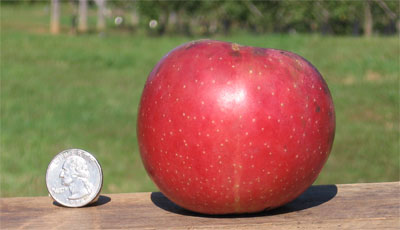
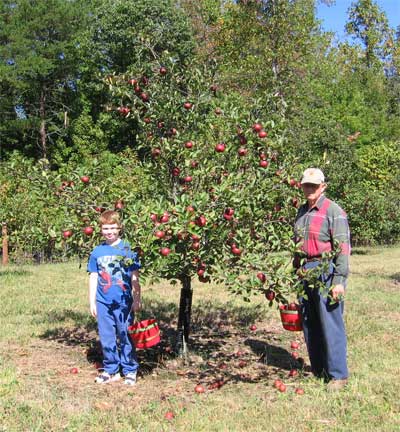
Above: Old Fashioned Winesap.......................................................Old Fashioned Winesap, just before picking
Stayman Winesap: This apple originated in Kansas in 1866 as a seedling of the original Winesap. It has been an important commercial apple for the past 100 years. It grows well in the south and is resistant to apple scab and cedar apple rust. The fruit is good for fresh eating, cooking, and making cider. The fruit is medium or larger and greenish with some red around most of the apple. The flesh is yellow, fine grained, firm, juicy, and sprightly subacid. Ripens in late September into October.

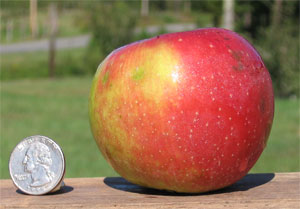
Above: Stayman .......................................................................................................lighter color where a leaf shaded the apple
Virginia Winesap: A redder sport of Winesap originating in Troutville, Va. in the 1920’s. It is a good keeper and ripens in late October.

Above: Va. Winesap
Yates
Yates: This apple originated in Fayette County, Georgia before 1860. This apple is small and has primarily been used as a cider apple. It is a good keeper and grows well even in the warmer areas of the south. Fruit small, skin a pale red with some darker stripes, and the flesh white, tender, juicy, aromatic, mildly subacid. Ripens in October.
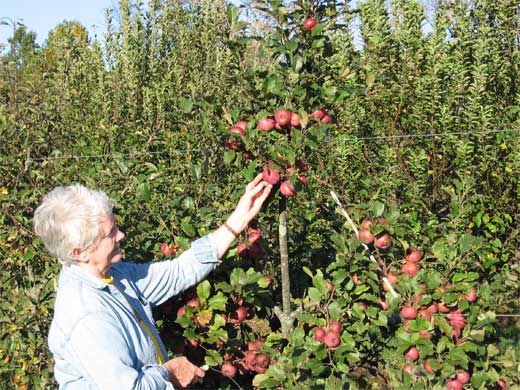
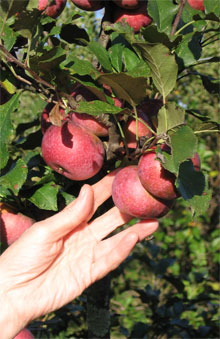
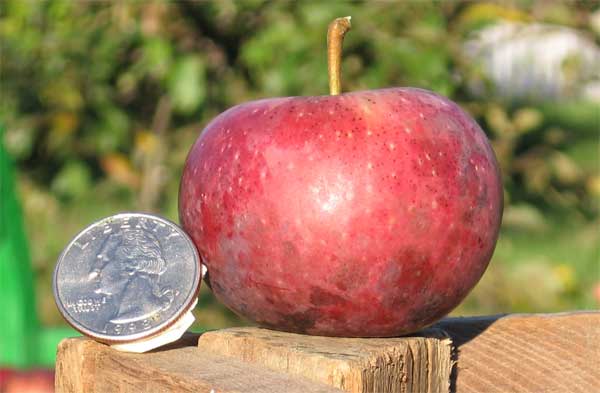
Yates
Yellow June
Yellow June: This apple is of unknown origin, but it is has been known to exist since 1845. If this apple ripened during August or later, it may have slipped into extinction. There are many other varieties ripening later in the season that offer much more. The Yellow June is tart, it bruises easily, and does not keep well. However, timing is everything to this apple. As a child, I loved this apple because it was the first to ripen at my grandparents’ farm, often around Father’s Day in June. Rural southerners knew the advantages of an apple ripening this early and had waited many months to taste the first apple of the summer season. Since my childhood, I have discovered that this apple is also one of the best frying apples, having the consistency of a sauce. Though this apple does not have the fresh eating qualities of the Carolina Red June, it ripens slightly earlier, definitely cooks better, and is more tart. The fruit is medium in size, a bright yellow upon full ripening (green otherwise), and the flesh white, tender, and briskly subacid. Ripens in late June and early July.
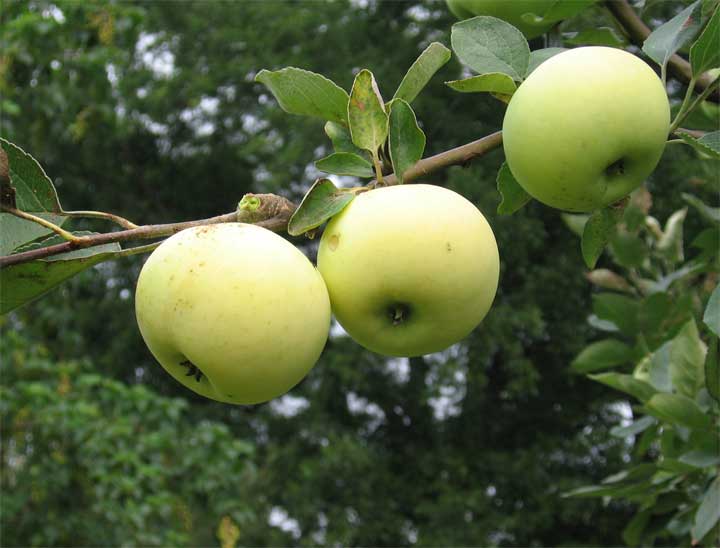
Yellow June
York Imperial
York Imperial: This Pennsylvania apple originated around 1830. The most distinguishing feature of this apple is its lopsided shape. My aunts loved this apple as children and referred to it as the “one-sided apple”. Many people love this apple’s flavor, though it may be harder to grow in some parts of the south below elevations of 1000 feet. It is susceptible to cedar apple rust, fireblight, and cork-spot. Fruit is medium to large, skin is yellow with splashes of red, and the flesh is yellow, juicy, coarse, crisp, and sprightly subacid. Ripens in October.

York Imperial
Ashmead Kernal
Ashmead Kernal: This apple is not a southern apple, but it is an heirloom and I think it is so unusal that I had to place it somewhere on the web site. This apple originated in England around 1700 and was brought to the United States much later . It is a small apple that is completely covered with a thick russet. The flavor is shockingly sweet and acidic and could almost be decribed as "fireworks for the palate". However, the apples are eratic in size and small and its apprearance somewhat unusual, hence it will never become a commericial apple. But, it you have room for a great little apple, try the Ashmead Kernal. Ripens the last of September into October.

Ashmead Kernal
End of Page 3 of Old Southern Apple Descriptions.
